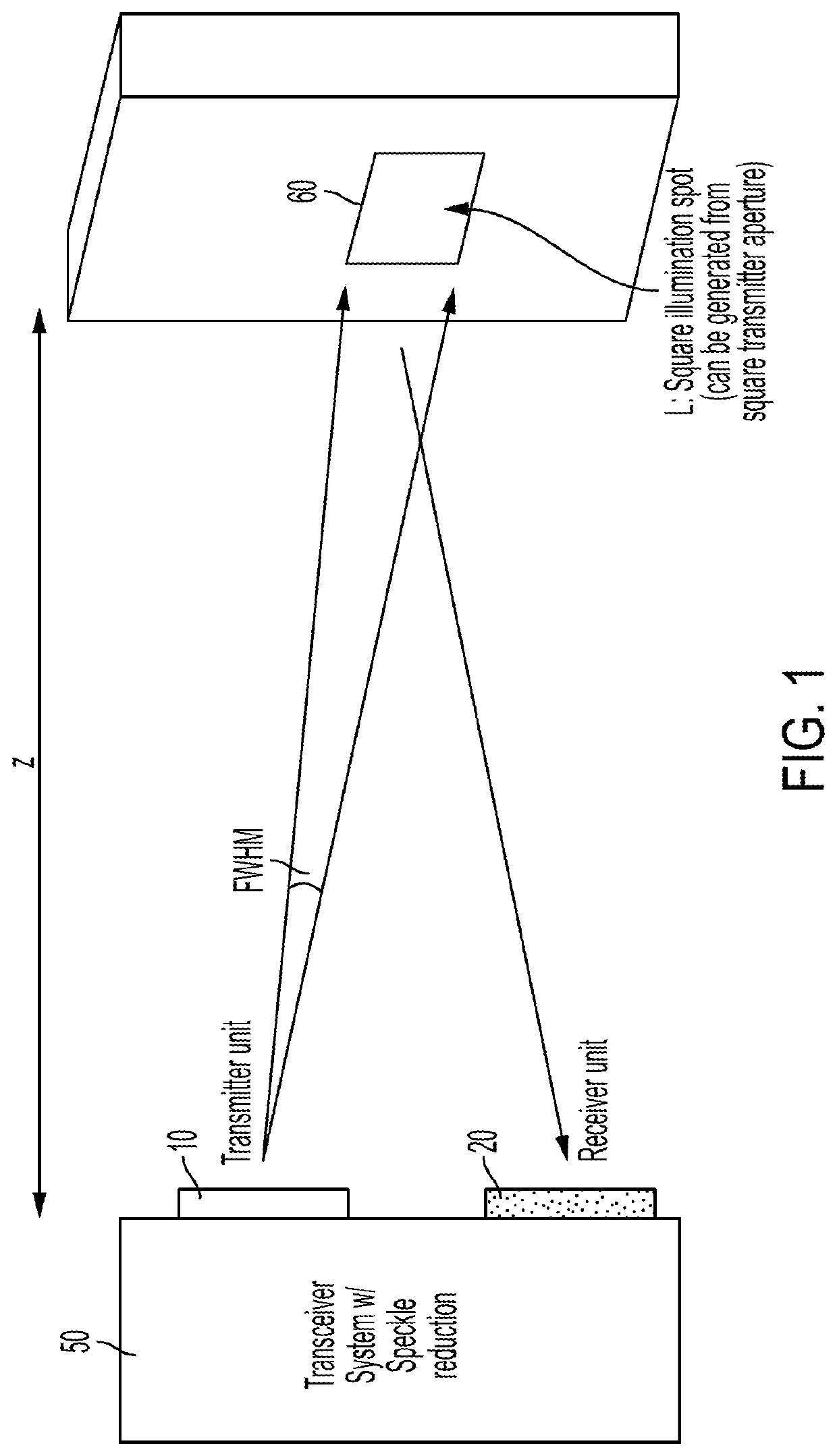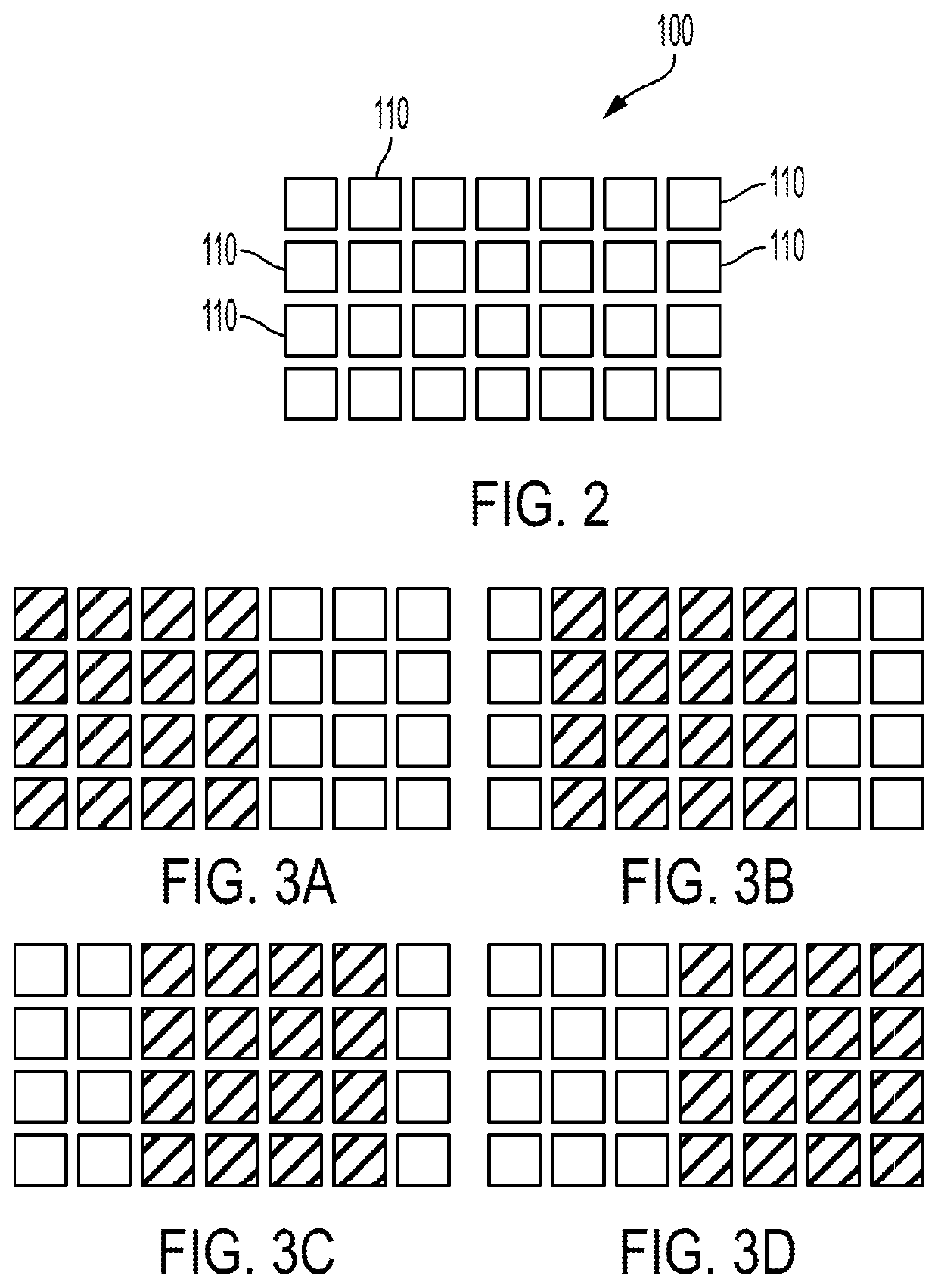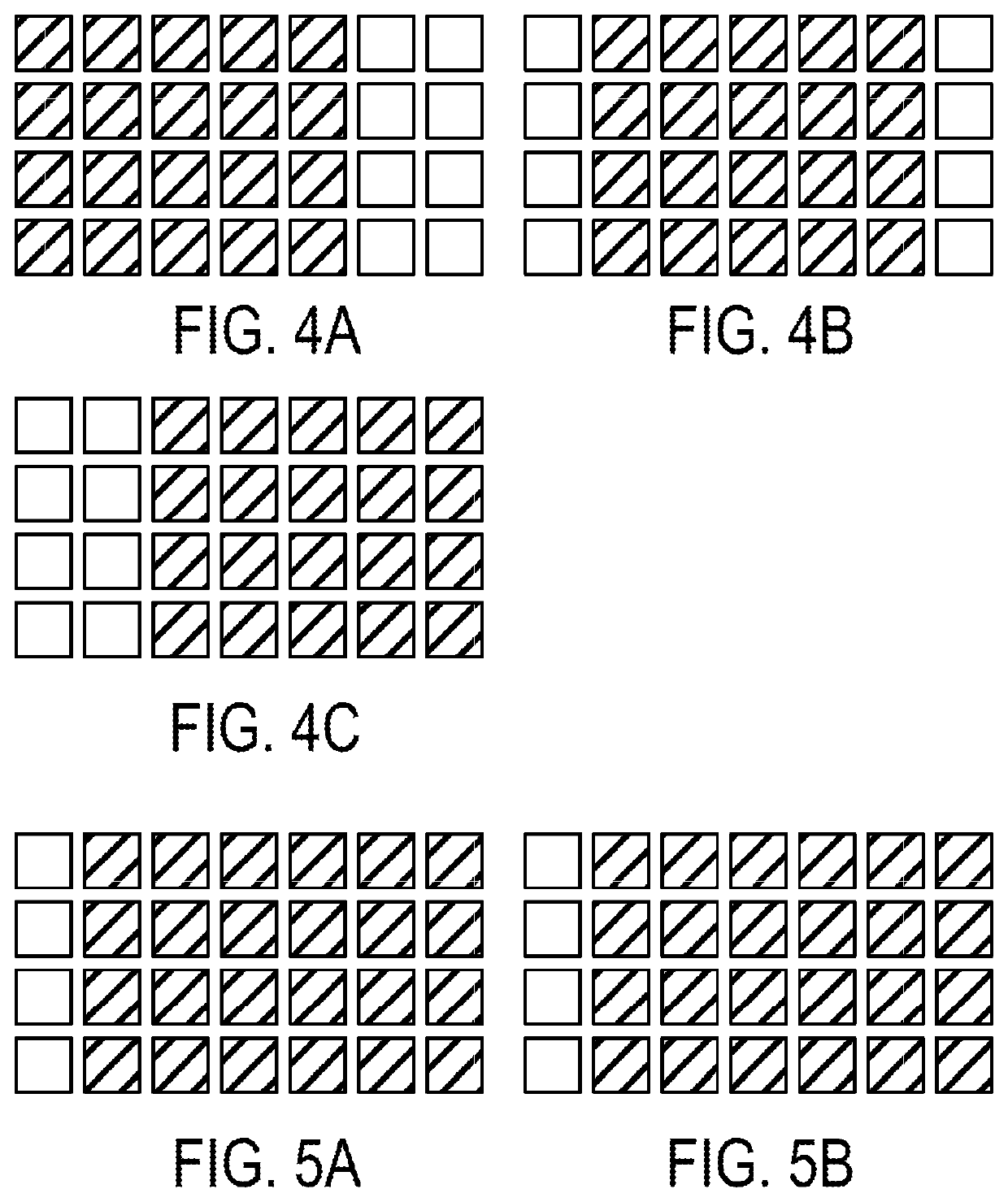Coherence artifacts suppression in integrated photonic systems
a photonic system and coherence artifact technology, applied in the field of photonic systems, can solve the problems of reducing the contrast of the captured or projected image, and reducing the quality of the projected or received optical signal
- Summary
- Abstract
- Description
- Claims
- Application Information
AI Technical Summary
Benefits of technology
Problems solved by technology
Method used
Image
Examples
Embodiment Construction
[0027]Embodiments of the present invention reduce the speckle density in a number of ways. For a fully developed speckle pattern, the speckle density is dependent on optical wavelength, polarization, illumination distance, and illumination spot size, as defined below:
[0028]nv=KAc(1)
[0029]In expression (1), nν represents the density of speckle vortices, K is a constant that is geometry dependent, and Ac is defined below. FIG. 1 shows an optical transceiver 50 forming an image of target 60, in accordance with one embodiment of the present invention. Transceiver 50, shown as including, in part, a transmitter unit 10 and a receiver unit 20, is spaced away from target 60 by distance z. For a square aperture the following expressions apply:
[0030]Ac=(λ2z2L2)(2)bσ2=(π23Ac)(3)nv=b / σ22π(4)
[0031]In expression (2), z represents the distance between the transceiver and the target, L2 represents the area of the target (see, for example, “Speckle Phenomena in Optics” by Joseph Goodman, 2006) As...
PUM
| Property | Measurement | Unit |
|---|---|---|
| optical phased | aaaaa | aaaaa |
| time | aaaaa | aaaaa |
| non-overlapping time intervals | aaaaa | aaaaa |
Abstract
Description
Claims
Application Information
 Login to View More
Login to View More - R&D
- Intellectual Property
- Life Sciences
- Materials
- Tech Scout
- Unparalleled Data Quality
- Higher Quality Content
- 60% Fewer Hallucinations
Browse by: Latest US Patents, China's latest patents, Technical Efficacy Thesaurus, Application Domain, Technology Topic, Popular Technical Reports.
© 2025 PatSnap. All rights reserved.Legal|Privacy policy|Modern Slavery Act Transparency Statement|Sitemap|About US| Contact US: help@patsnap.com



